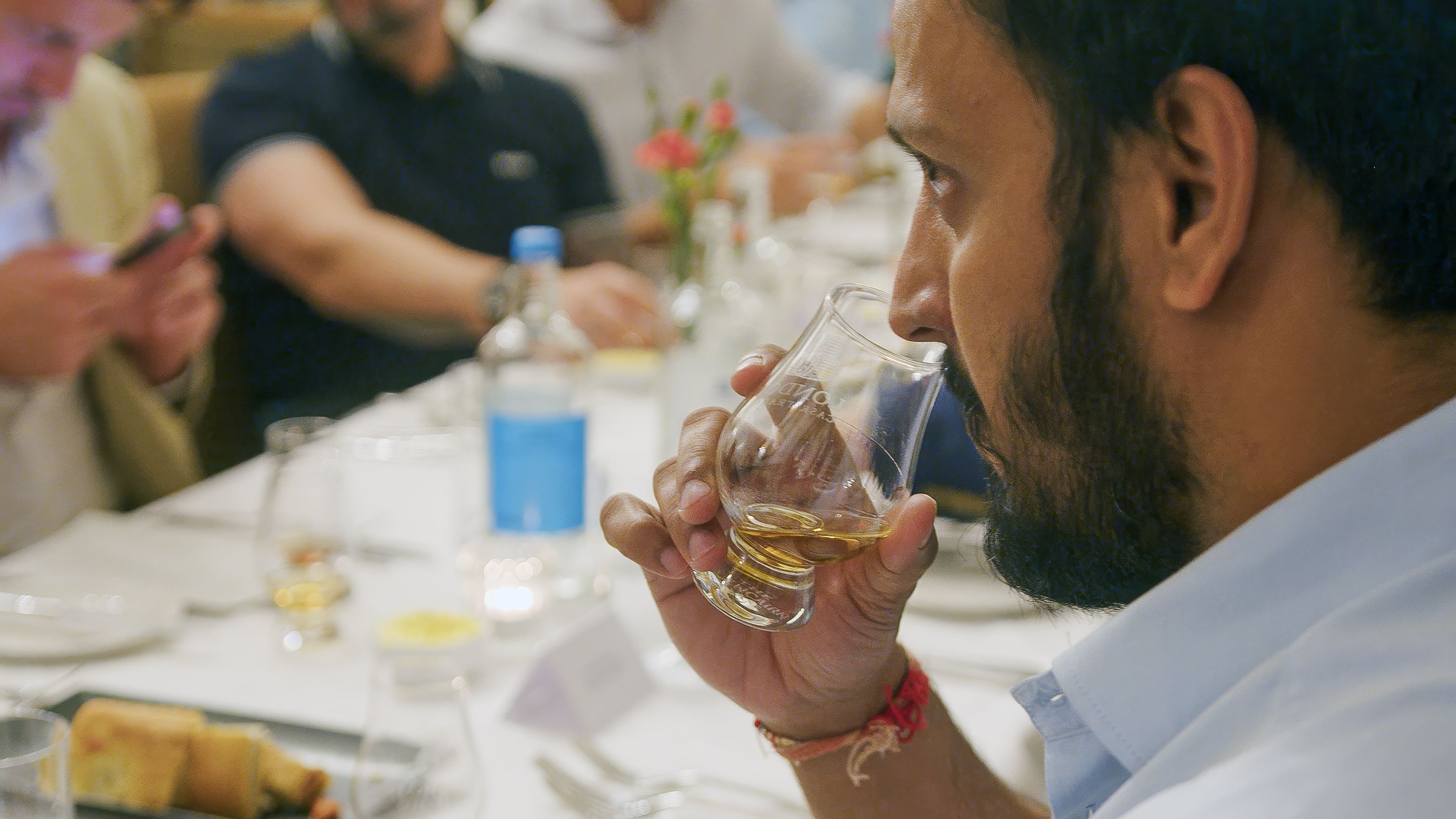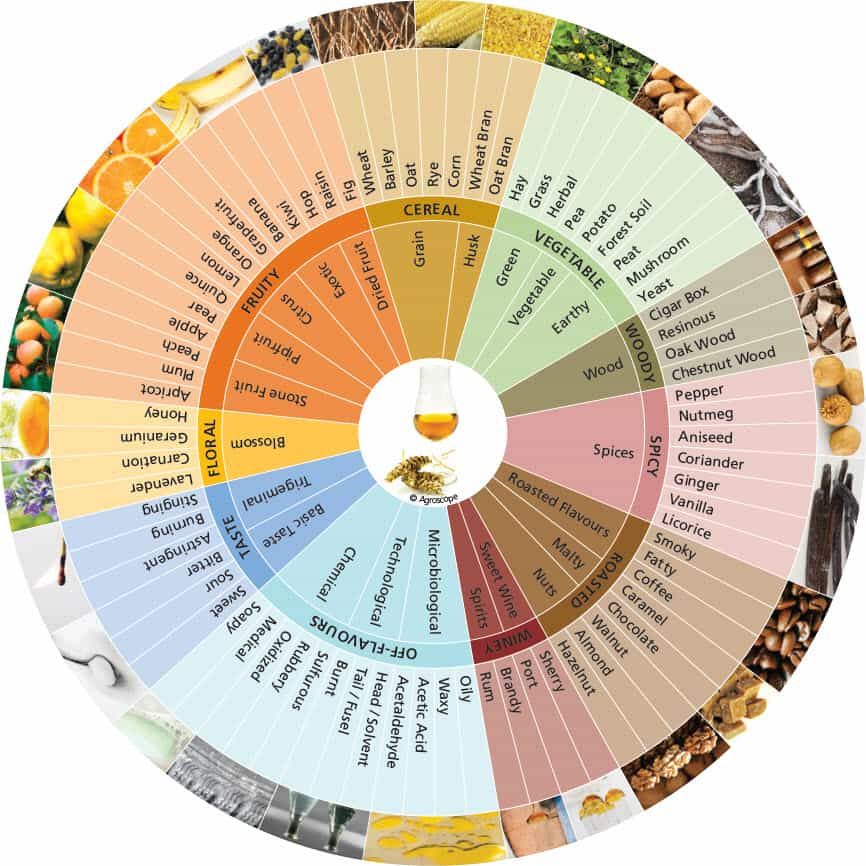
How To Drink Whisky - Tasting Notes (Part 2 of 4 in Our Ultimate Guide Series)

Victoria O'Brien
Head of Content at London Cask Traders
The Whisky Flavour Journey (In Six Easy Steps)
STEP 1: Let It Breathe
Pour a dram of your chosen whisky, and let it sit in the glass for at least 1 or 2 minutes to allow all its notes to appear.
Why does this matter?
• Whisky is bottled at 40-64% ABV, which creates intense alcohol fumes straight from the bottle.
• Unlike wine, whisky doesn't mature in the bottle but contact with air (or more precisely oxygen) softens these fumes, unlocking subtle aromas otherwise hidden behind the alcohol.
• Contact with water has a similar effect, which is why adding a few drops is often recommended for tastings (learn more about Whisky and Water next week ...).
Identify the Colour
The colour of a whisky reveals a lot about its maturation process – hold your glass up to the light, or against a white background, for clues about cask type and ageing.
As a general rule of thumb, ex-Bourbon casks tend to produce lighter, paler and greenish-yellow hues, while European or sherry casks are increasingly darker in tone and more caramel-coloured.
Whisky Colour Guide: [suggested image: whisky colour chart]
• Pale Gold/Straw: Likely aged in ex-Bourbon casks (eg: Glenlivet Founder's Reserve).
• Light Amber/Copper: Suggests influence from oak, often seen in whiskies aged longer in ex-Bourbon casks (eg: Ardmore Legacy).
• Rich Amber/Copper: These shades point to Sherry cask maturation (eg: Macallan 18).
• Deep Red/Mahogany: A darker tone often signals port of wine cask finishes (eg: Glenmorangie Quinta Ruban).
Pro Tip: Darker whiskies aren't necessarily better or older – in some cases, colour is influenced by additional caramel colouring (E150); so don't base judgement solely on hue.

STEP 3: Swirl It
Swirling the whisky around the sides of the glass adds further oxygen, but also provides an indication of the texture and body – pay attention to how it clings to the inside of the glass and notice how the 'legs' drip or fall.
- Fast, slim legs = light-bodied (eg: Glenkinchie 12, Lowland)
- Slow, thick legs = rich, oily and full-bodied (eg: Bunnahabhain, Islay)
Pro Tip: In wine tasting 'legs' are often an indication of alcohol content; with whisky they more usually provide hints about texture in the mouth, or 'mouthfeel'.
STEP 4: Smell It
Nosing your whisky is one of the most crucial parts of the tasting process. Ideally, when smelling any whisky in a glass, your mouth should be slightly open and your nose an inch or so away from the top rim, gently tipped at an angle towards you.
Next, try covering the glass with your palm and swirling it gently again to concentrate the aromas. You'll uncover even deeper layers of complexity this way.
Most single malt whiskies will have a balance of aromas, ranging from the delicate floral and fruity notes, through to more woody, smoky and peaty.

STEP 5: Taste It
Sip and savour, this is key to tasting whisky – if you knock it back, or gulp, the liquid will miss essential taste buds in your mouth.
Take a small sip of your whisky and hold it for a few seconds in your mouth. Let it coat your tongue – front back and sides will all respond differently. Then swallow and let the flavours develop.
Start identifying more complex flavours (whiskies can differ at the tip of your tongue than at the back or sides of it).
How Whisky Changes Across Your Tongue:
• Tip: Sweetness – vanilla, honey or toffee notes
• Sides: Sour/tart – citrus, apple or orchard fruits
• Back: Bitterness/Spice – cloves, oak or even dark chocolate
Pro Tip: You might feel a little heat at first (often referred to as 'whisky burn'), but that quickly gives way to dominant flavours. Remember to swallow slowly and let flavours develop – some whiskies can be very sweet and delicate at the beginning, and spicy or woody towards the end.
Typical Mouthfeel and Primary Flavour Examples:
- Light and clean – Speyside, gentle on the palate, refreshing
(eg: Glenlivet 12 – Smooth, green apple, vanilla) - Creamy or oily – Highlands, fuller texture, more complex
(eg: Dalmore 15 – Silky texture, orange marmalade, and spice) - Dry and ashy – Islay, often tied to peated whiskies
(eg: Caol Ila 12 – dry, salty with light smoke and brine)
STEP 6: The Aftertaste:
- The aftertaste is what is left in your mouth once you've swallowed your whisky. Whisky experts will often talk about 'finish' and this is defined by the length and nature of the flavours after swallowing:
- Short and clean – quick fade, light character (example: Auchentoshan 12 – crisp citrus, short floral finish)
- Medium and warming – spiced or nutty tail (example: Tomatin 18 – apricot, cinnamon, gentle oak)
- Long and smoky – lingering complexity (example: Ardbeg Uigeadail – peat, dark cocoa, espresso)

Whisky Flavour Wheels
‘Flavour wheels’ are a useful indication when trying to describe any whisky, helping you decode the tasting experience. Here are a few examples with tasting notes:
Region Typical Tasting Notes Example Whisky
Speyside Apple, vanilla, honey, floral Glenlivet 12
Highlands Spice, heather, dried fruit, nutty Dalmore 15
Lowlands Grass, citrus, soft spice Auchentoshan
Islay Peaty, smoky, maritime, medicinal Ardbeg 10
Campbeltown Oily, savoury, saline, Springbank 10
Final Pro Tip: Tasting order matters. When tasting several whiskies work your way from delicate to intense – start with the lighter, more floral styles and move toward the bold and smoky, for example:
Start: Lowlands, Speyside (Glenkinchie; Glenlivet)
Mid-range: Highlands (Balvenie; Dalmore)
Finish: Islay (Laphroaig; Ardbeg)
This order keeps your palate fresh and builds a proper crescendo.
From Beginner to Connoisseur: Checklist
- Let It Breathe - time is an ingredient
- Add water - purposefully, not fearfully
- Observe The Glass - for colour and 'legs'
- Nose Deliberately - aroma is your primary tool
- Sip and Savour - for mouthfeel as well as flavour
- Don't forget the aftertaste - 'finish' defines great whisky
Coming Next Week: Water and Whisky
In the next part of our guide, we'll dive into the fascinating world of whisky and water. We'll investigate the science and reveal why adding just a few drops can completely transform your tasting experience – stay tuned for more whisky wisdom.
Want to fast track your whisky knowledge? Follow our four-part series, a weekly guide taking you from beginner to connoisseur. [click here] for How to Drink Whisky - THE BASICS (Part 1 of 4 in our Ultimate Guide Series)

Victoria O'Brien
Head of Content at London Cask Traders
